The Role of Traditional Music in Shaping National Identity: A Cultural Perspective
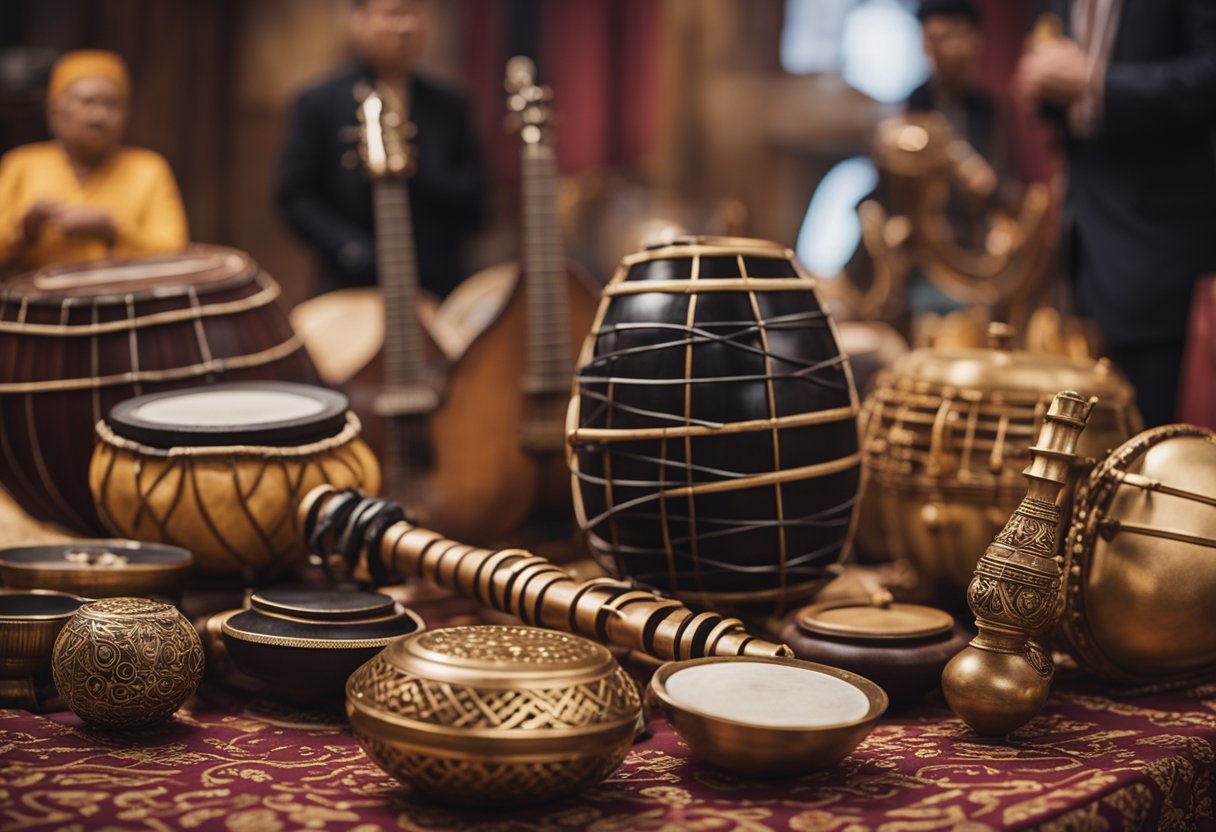
Updated On: April 24, 2024 by Raghda Elsabbagh
Traditional music serves as a resonant expression of a nation’s soul, encapsulating the rich tapestry of its history, values, and ethos. As an audible reflection of cultural identity, it has the power to foster a shared sense of belonging among people. Throughout generations, these melodies and rhythms are passed down, preserving the unique narratives and collective memories of a community. They act as cultural cornerstones, preserving the heritage and guiding the contemporary expressions of national character.
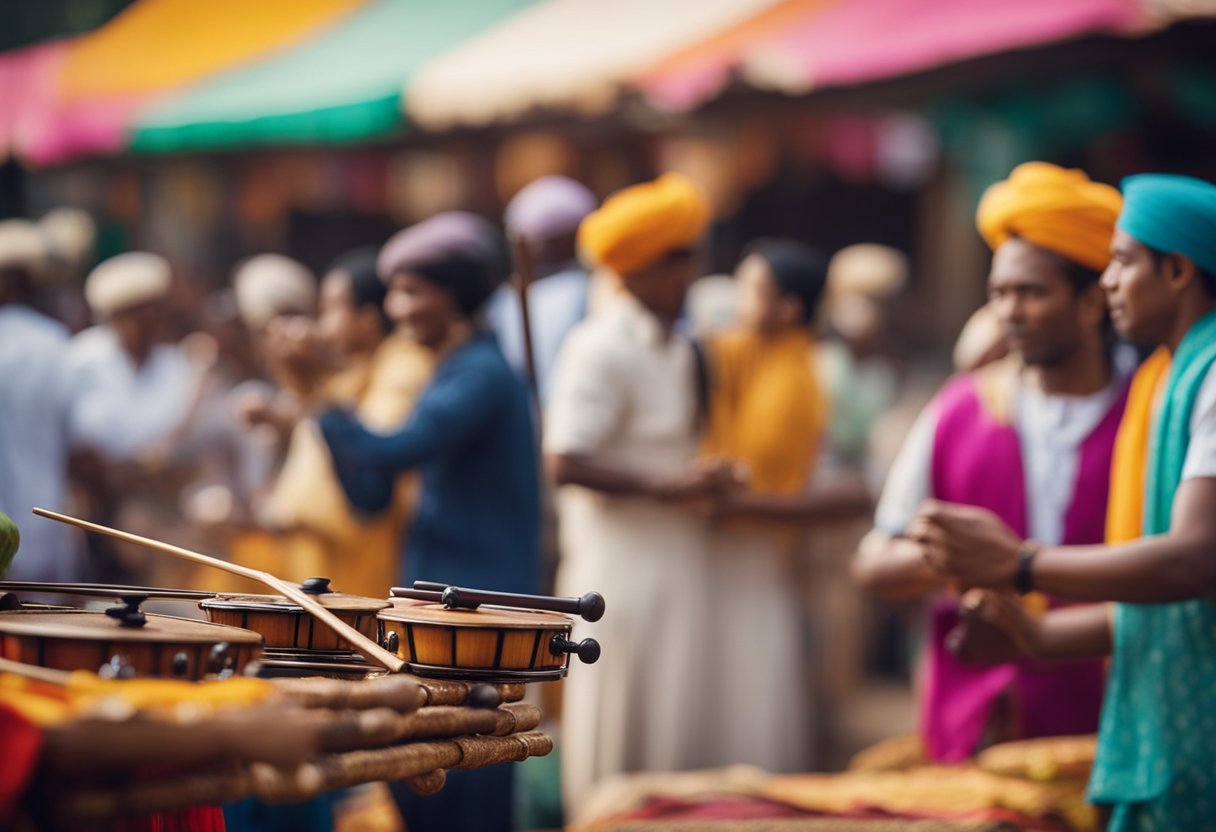
Amidst the rapid pace of globalisation, traditional music remains a steadfast anchor, maintaining continuity with the past while adapting to the present. The evolution of technology and the influence of global musical trends continuously mould the soundscape of traditional genres. Yet, they persist as a means of reaffirming national identity, especially in times where homogenising forces challenge cultural distinctiveness. Traditional music, in its capacity to evolve while retaining its essence, plays a critical role in the ongoing discourse about who we are as a people and what defines us as a nation
Table of Contents
Historical Overview of Traditional Music
Let us examine the profound impact and evolution of traditional music, its role in shaping national cultures, and its use as an instrument of power throughout history.
Origins and Evolution
Traditional music, often seen as the voice of cultural identity, can be traced back to ancient civilisations, where it served as a cornerstone for communal gatherings and rituals. For centuries, we have observed its evolution, melding the spirit and values of societies into melodies and rhythms. These forms of music have been passed down through generations, often orally, holding stories and experiences of the people.
Influence of Colonisation on Music
Colonisation brought about significant cultural exchanges, reshaping the musical landscape of many regions. As empires expanded, they introduced new instruments and styles which interacted with indigenous traditions. The resultant musical forms were often a blend of local sounds with foreign influences. This synthesis sometimes bolstered the colonised culture, while at other times, it led to the erosion of traditional musical expressions.
Music as a Tool in Historical Conflicts
Throughout history, music has often played a vital role as a means of communication and rallying cries during wars and conflicts. It has served to bolster morale, strengthen cultural ties, and convey messages of resistance. The power of traditional music to unite and inspire has made it an enduring emblem of national struggle and perseverance.
Music and Cultural Identity
In this section, we explore how traditional music acts as a pillar of cultural identity, carving the national character and fostering the revival of indigenous musical genres.
Defining Cultural Identity Through Music
Music serves as a profound expression of cultural identity, reflecting the values, stories, and experiences of a people. Traditional music embodies the essence of a culture, often conveying the history and collective memory of its people. This form of musical expression is integral in preserving and communicating the uniqueness of a culture, especially in the face of globalisation.
Folk Music and National Character
Folk music is intrinsically linked to national character, resonating with the experiences of daily life, historical events, and relationships within indigenous people and societies. By encapsulating the emotional and social narratives of communities, folk music reveals the distinctive traits and values that constitute the foundation of a nation’s character and identity. Typically passed down through generations, this music genre solidifies the connection between race, culture, and identity.
Revival of Indigenous Music Genres
The revival of indigenous music genres is a testament to the enduring power of music and its capacity to express cultural authenticity. As we witness a resurgence in the popularity of traditional music, there is a growing appreciation and understanding of the richness and diversity of musical genres that are unique to various cultures. This revival is not only affirming the identity of indigenous communities but also encouraging a deeper respect for the plethora of authentic musical styles our world has to offer.
The Impact of Globalisation on National Music
In the era of globalisation, national music has both converged under widespread cultural influences and evolved into innovative forms. We see these dynamics play out through the tension between cultural assimilation and musical hybridity, as well as the effects of world music on national narratives.
Cultural Assimilation vs. Musical Hybridity
Globalisation has led to an increased sharing of cultural resources, which has, in some instances, resulted in the assimilation of traditional music into a homogenised global sound. However, we often witness musical hybridity, where traditional music integrates elements from diverse cultures, leading to new, dynamic musical forms. This blend maintains the essence of national identity while embracing global influences.
World Music and Its Influence on National Narratives
World music has played a pivotal role in shaping and redefining national music narratives. As global processes foster intercultural exchange, traditional music often gains international recognition, becoming an embodiment of cultural identity on the world stage. Our understanding of national music is constantly being reshaped by its interaction with global musical trends, with world music serving as a bridge that connects us to myriad national stories.
Music and Nationalism
Music is an expressive tool that nations employ to foster a sense of identity and unity among their people. In this section, we’ll explore how national anthems and songs, as well as music in national celebrations and festivals, contribute to nationalism and cultural identity.
National Anthems and Patriotic Songs
National anthems and patriotic songs are fundamental to expressing and reinforcing a nation’s identity and values. These compositions often encapsulate the essence of national pride, historical significance, and collective values. They are performed during important political events and serve as powerful symbols of unity. For instance, the words and music of national anthems reveal common characteristics that are instrumental in galvanising feelings of patriotism and belonging.
Music in National Celebrations and Festivals
Music is pivotal in national celebrations and festivals, serving both to entertain and to convey deeper cultural traditions. National music plays a prominent role in these events, often reflecting the country’s heritage, diverse cultures, and social dynamics. During festivals, music acts as a vehicle for collective memory and a means to showcase both tradition and contemporary cultural expressions. It also strengthens communal ties, celebrating not just the nation’s achievements but its endurance and shared values. Political and populist elements are often interwoven in these musical expressions, showcasing the power of music in uniting individuals under a shared national identity.
Music in Modern Politics and Society
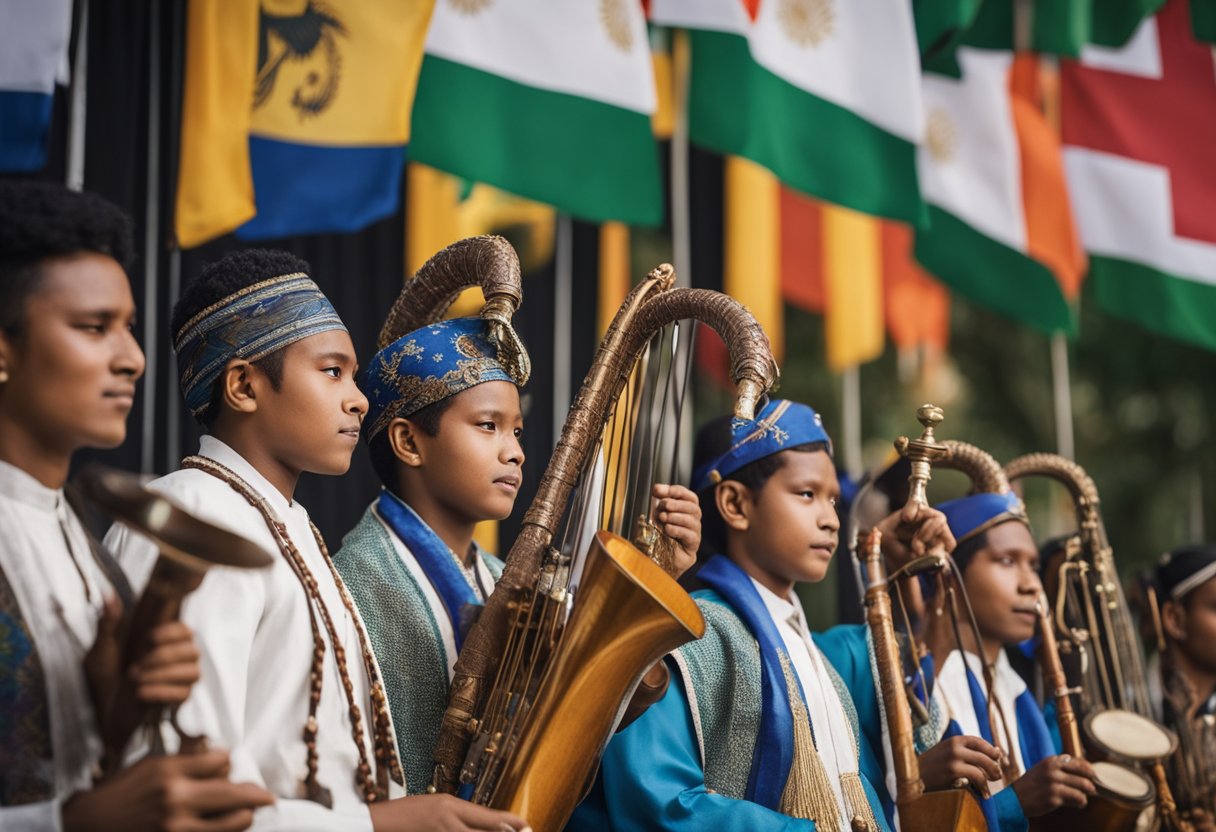
Music’s role in politics and society is multifaceted, acting as a vehicle for political agendas and a tool for fostering social cohesion.
Music as a Medium for Political Agendas
Political entities often utilise music to promote ideologies and attract support, possibly leveraging cultural heritage to do so. The populist right-wing parties within Europe, for example, have been known to adopt traditional music styles to reinforce national pride and cultural identity among their constituents.
Fostering Social Cohesion Through Music
Music serves as a powerful unifying force within society at large. By transcending linguistic and cultural barriers, it can create a sense of community and shared experience. In Ireland, as chronicled by Connolly Cove, music gatherings in pubs and festivals not only keep cultural traditions alive but also strengthen community bonds.
Bold beats and harmonious melodies are as much a part of modern society as they are of our political currents. Music has the remarkable ability to fortify our sense of unity and to stir persuasive tides in our societal discourse.
The Sociology of Music
Before delving into the specific ways music interacts with society, it’s crucial to understand that music serves as both a mirror and a moulder of social realities. It reflects collective identities while also actively shaping the integration process within multicultural societies.
Music as a Manifestation of Social Identities
Music is a vibrant language through which social groups express their unique collective identities. It serves as a cultural emblem, bearing the distinctive marks of a community’s history, beliefs, and values. In a multicultural society, these musical expressions take on additional layers, comingling the sounds of various traditions to produce new, hybrid forms. This melding of styles not only reflects a society’s diversity but also contributes to the ongoing narrative of a community’s evolving identity.
Role of Music in Diaspora and Integrating Minorities
In the context of migration and the diaspora, music becomes a critical tool for integrating minorities and fostering a sense of belonging in a new country. As individuals traverse borders, music remains a steadfast companion, preserving the memories of their homeland while also assisting in their adaptation to a new cultural environment. It enables minority communities to maintain a connection with their roots while also engaging and finding a place within their host society. Through musical expression, diasporic communities are able to navigate the complexities of their identities, enriching the multicultural fabric of their new settings.
Integration of Technology in Traditional Music

We understand that intertwining technology with traditional music enhances its accessibility and promotes cultural continuity. By incorporating modern tools, traditional rhythms and sounds reach new audiences, preserving heritage whilst evolving with contemporary tastes.
New Media and the Accessibility of Traditional Music
Technology has revolutionised how we access and experience traditional music. Social media platforms have become critical in disseminating these cultural artefacts, ensuring that traditional tunes are not confined to their geographical origins but are shared globally. Media streaming services offer on-demand access to vast libraries of traditional songs, thus bolstering their presence in the digital age. Podcasts and internet radio stations are also pivotal, spotlighting traditional music and providing context to audiences unfamiliar with its heritage.
The Fusion of Traditional and Popular Music
The digital era has facilitated a harmonious blend between traditional music and popular genres, resulting in innovative hybrids that resonate with a broad demographic. Recording technology allows artists to fuse traditional music seamlessly with contemporary beats, creating an exciting soundscape that honours tradition while engaging with modern trends. This fusion is evident on platforms where traditional melodies interweave with global sounds, underscoring music’s universal language and forging new, inclusive identities.
Case Studies of Traditional Music’s Role
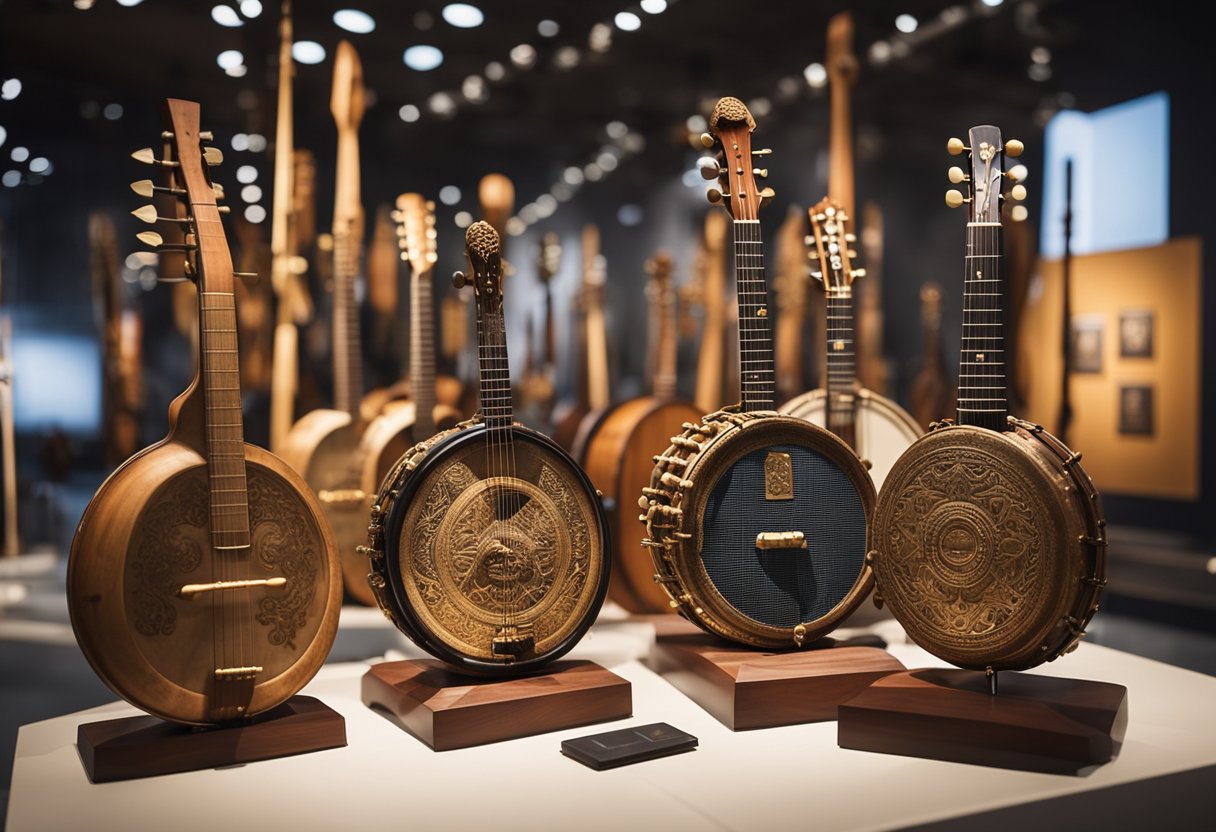
In this section, we’ll explore how traditional music has been instrumental in shaping and expressing national identities across different cultures. We’ll delve into specific case studies of African drumming and its connection to political narratives, as well as flamenco’s significance in Spanish national identity.
African Drumming and Political Narratives
African drumming serves not only as a rhythmic backbone for communal rituals but also as a powerful vehicle for political expression. In Africa, drumming is often imbued with symbolic meanings and messages that resonate with the collective identity and socio-political experiences of the people. For instance, during the colonial period, drumming was a form of resistance against oppression, conveying messages of solidarity and defiance. It continues to play a role in modern political landscapes, echoing the voices of the past and driving contemporary movements.
Flamenco and Spanish National Identity
Flamenco, originally from Andalusia, is an intense and expressive art form that has become synonymous with Spanish national identity. Flamenco embodies the strength and spirit of the Spanish people with its intricate dance moves, heartfelt guitar playing, and soulful singing. The music and dance form has transcended regional boundaries and become a national symbol, showcasing the power of music in uniting a country while still reflecting the diversity within its regions.
Challenges and Future Directions
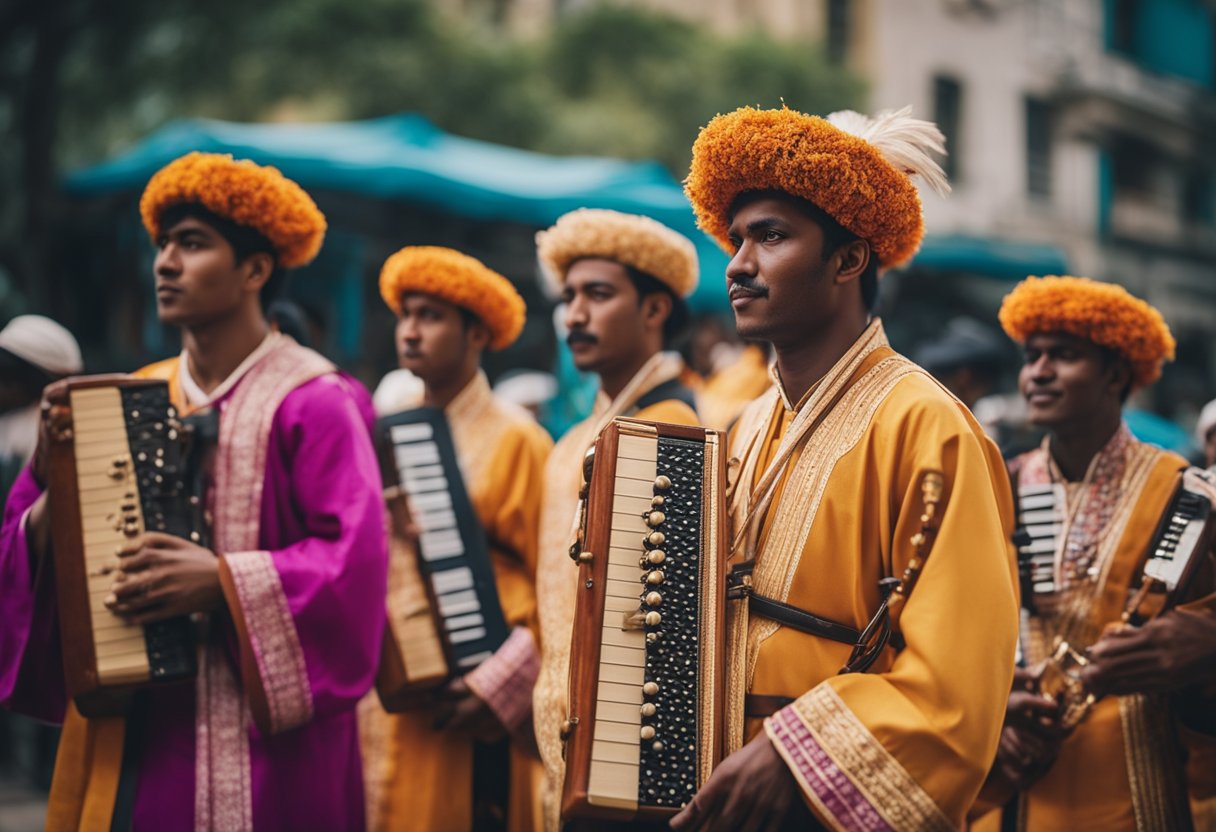
As we consider the role of traditional music in national identity, it becomes evident that we face significant challenges in preserving this cultural expression while also adapting it to the vibrant tapestry of contemporary societal contexts.
Safeguarding Traditional Music Against Modern Threats
Key Challenge: The infiltration of global flows and fast-paced digital advancements threatens to overshadow the intrinsic value of traditional music. In some regions, migration, together with shifts in integration policies, may lead to a dilution of cultural heritage as communities become more dispersed.
- Future Research Directions:
- Investigate effective preservation techniques for music at risk of being lost.
- Study the impact of digitisation on music transmission and pedagogy.
Adapting Traditional Music to Contemporary Contexts
Identity Polarisation: As our societies evolve, so does the potential for identity polarisation. Traditional music must not only survive but thrive, adapting in ways that contribute to cohesion rather than division.
- Future Research Directions:
- Analyse how traditional music can foster integration amidst modern cultural shifts.
- Explore innovative platforms and collaborative initiatives that re-contextualise heritage music for new audiences.
Conclusion
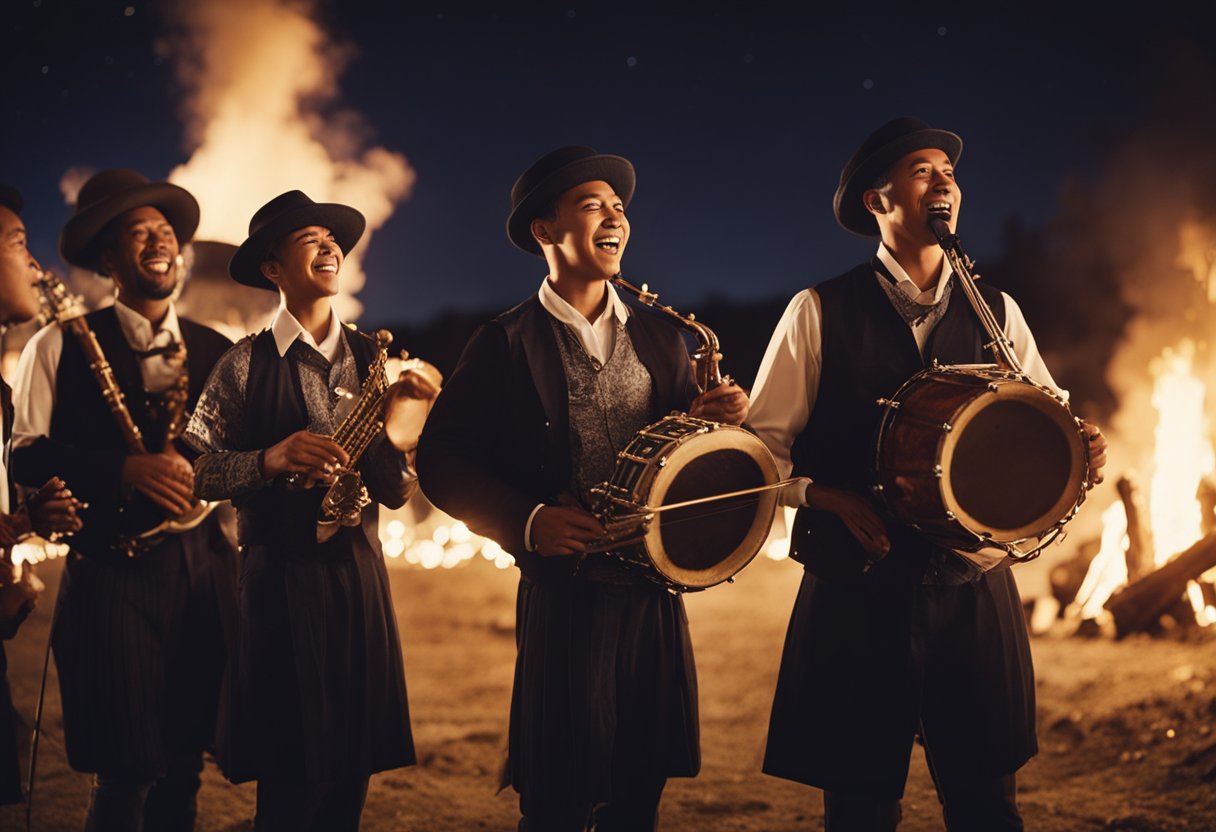
In our exploration of traditional music, we’ve seen it plays a crucial role in cultural identity formation. Through melodies and rhythms, individuals and communities express their history, beliefs, and social values. Music serves as a powerful strategy to reinforce national identities, enabling the passage of collective memory and shared knowledge from one generation to the next.
Research in the field of emotional sociology connects folk music with cultural theory, highlighting music’s capacity to evoke a shared emotional experience among listeners. This emotional connection strengthens communal bonds and fortifies a sense of belonging. Analyses of musical representations have illuminated how music acts as a dynamic tool in national identity construction, from Ireland’s folk traditions to the diverse expressions found worldwide.
Our insights into this topic underscore music’s versatility as a cultural artefact and a pillar of identity. By engaging with music, societies articulate their unique place in the world while contributing to the broader tapestry of human creativity. Traditional music, therefore, is not merely a form of entertainment but a repository of a nation’s cultural wealth and a vital medium for expressing and sustaining its distinct character.
In summary, music is a foundational element in defining and upholding the identity of a nation. It is our responsibility to acknowledge and preserve these cultural expressions. This will ensure that the knowledge and sentiment they carry are not lost but continue to inform the identities of future generations.
Further Reading and Resources
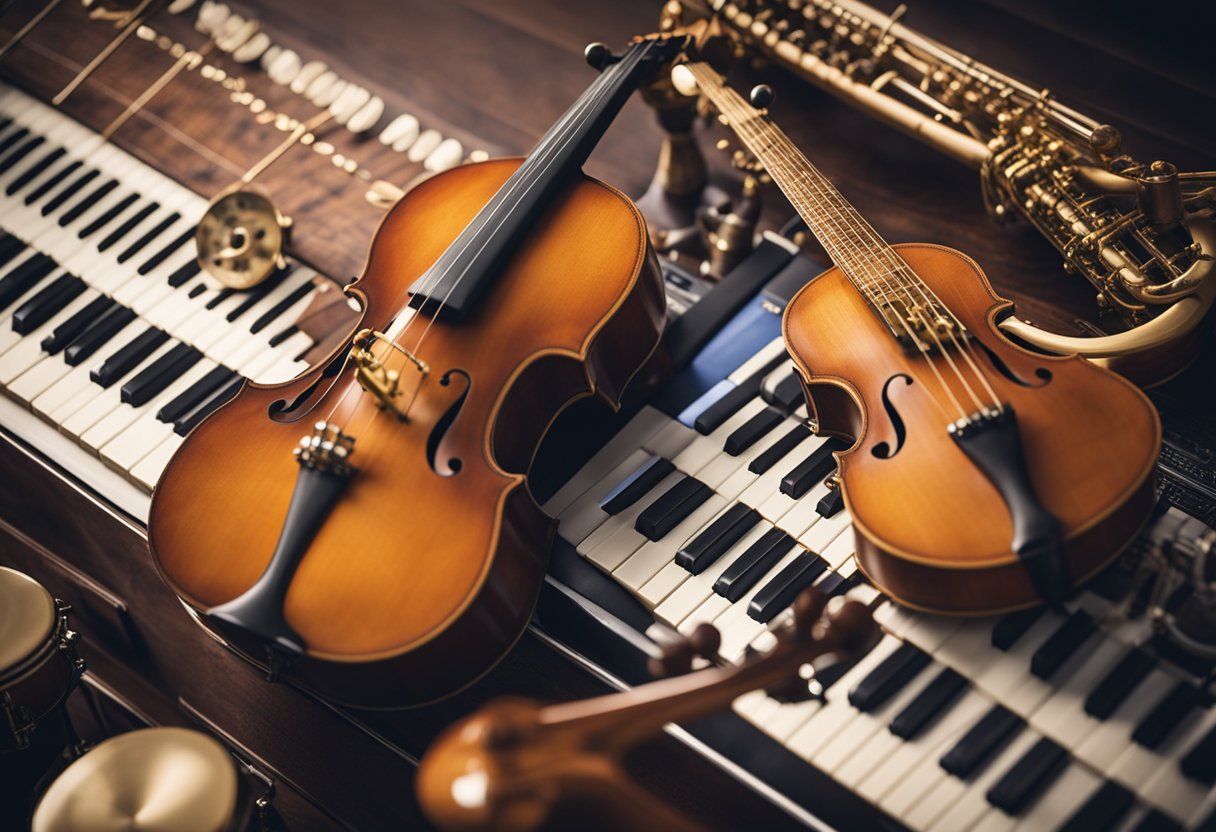
We’ve curated essential resources for those interested in the intersection of traditional music and national identity, ranging from academic articles to groundbreaking works in ethnomusicology.
Key Academic Articles
To deepen your understanding through scholarly research, consider immersing yourself in these influential academic articles:
- “The role of music in ethnic identity formation in diaspora“: This paper examines how immigrants and refugees use music as a key tool in crafting their identities within new cultural contexts. It explores the complexities of migration and identity through the lens of music. You can access the full article here.
- “Music and Nationalism“: Delve into how nations use music as a political instrument and how communities use it to articulate their own identities, often pushing back against national narratives. Access the chapter here.
Notable Ethnomusicology Works
In the field of ethnomusicology, these works are highly regarded and provide invaluable insights:
- traditional music and Cultural Identity“: This significant piece in the history of ethnomusicology offers a methodology that intersects traditional music with cultural identity, providing a framework for analysis. Find this resource here.
- “Exploring Traditional Music’s Role in World Cultures“: This article encapsulates the richness of traditional music as a carrier of history, expression, and global understanding. The importance of safeguarding and celebrating traditional music is thoroughly discussed. Engage with the full text here.
Frequently Asked Questions

In this section, we answer some pressing queries about the intricate relationship between traditional music and national identity.
How does traditional music contribute to national identity?
Traditional music acts as a sonic emblem of a nation’s heritage, embedding the unique character and history of a people within its melodies and rhythms. It is an auditory vessel that carries the essence of cultural identity across generations.
What is the significance of traditional music within a culture?
Music born from traditional roots serves as a cornerstone of cultural heritage, embodying the customs, stories, and collective memory of a society. It contributes to a shared sense of belonging and historical continuity.
In what ways does traditional music influence youth culture and identity?
Through traditional music, younger generations connect with their cultural roots, often reinterpreting and revitalising ancestral sounds in a way that resonates with contemporary values and social movements.
How does traditional music reflect the values and beliefs of a society?
The lyrics, instruments, and styles of traditional music provide insights into the societal norms, moral values, and spiritual beliefs of a community, thus acting as an acoustic mirror of its social fabric.
What role does traditional music play in the cultural identity of a nation?
Traditional music amplifies a nation’s cultural identity by reinforcing national symbols, languages, and narratives that define a populace’s distinctiveness on the world stage.
How are music, art, and fashion indicative of a national identity?
Music, art, and fashion collectively manifest the aesthetic sensibilities of a nation, tangibly expressing its cultural identity through creative means that range from the sartorial to the symphonic.






